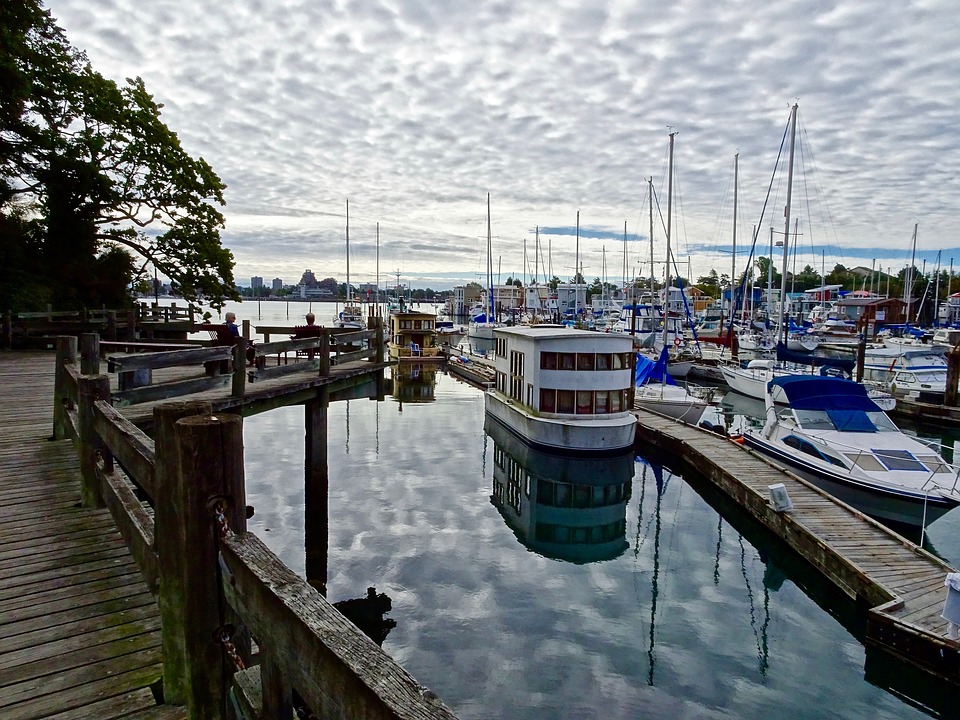Most of us know Esquimalt as a pleasant seaside community full of parks, waterways, and fabulous local real estate. Only ten minutes outside of Downtown Victoria, it is easily one of the most sought after neighbourhoods on the Island. Those that live there love it, and those that don’t, well, they love it too. But what many people might not know is the rich history that precedes present-day Esquimalt. Let’s take a look.
Beginnings
Prior to the arrival of European settlers, Esquimalt was home to the Coast Salish people, who had occupied the area for nearly four thousand years. Although not much is known, there’s a long-standing village site on the eastern shore of the harbour, where the Esquimalt Band makes its home today.
Arrival of European Settlers
In 1790, the first European ship – led by Spanish explorer Don Manuel Quimper – made its way into the area. Renaming the harbour “Puerto de Cordova” (after the 46th viceroy of New Spain), Quimper and his men would set up shop, placing a large wooden cross on top of the hill.
Upon their return later that summer, the cross has already been taken down, a clear cut sign of their tenuous grasp. Only two years later, Captain George Vancouver would explore the area and gain control of the region for Britain and the Hudson’s Bay Company (HBC).
By 1843, HBC Chief Factor James Douglas – who would later go on to govern the Crown Colonies of Vancouver Island and BC – searched for a new site to settle the HBC’s pacific operations. Although that fort would end up in Victoria Harbour, Douglas saw agricultural potential in what we now know as Esquimalt. Here he would establish three farms (Viewfield, Craigflower, and Constance Cove) to supply Fort Victoria and other Hudson’s Bay facilities in and around the area.
The Royal Navy
It didn’t take long before the Royal Navy realized what a fine harbour Esquimalt was, as they visited the region throughout the 1840s and 1850s. In fact, by 1855, they had constructed three medical buildings on Duntze Head in preparation for treating men injured in the Crimean War. Ten years later and the Royal Navy would choose Esquimalt as the new headquarters of their Pacific Squadron. Finally, in 1887, the naval dockyard was completed, allowing for state-of-the-art ship repair and a refitting site.
Boom Town
What with all the attention received from the Royal Navy, a small settlement would begin to crop up beneath Signal Hill. Along with the wharf and a few shops, residents began building their homes on Wharf Street, which ran south from the harbour.
During this time (between 1856 and 1858), Crown lands from the original Esquimalt town site were surveyed and sold off. Some of the buyers included British Columbia’s most prominent citizens such as Roderick Finlayson and Dr. Helmcken.
Meanwhile, the discovery of gold along the Fraser River in 1858 would only add to the growing population and popularity of Vancouver Island. An innumerable number of prospectors made their way through Esquimalt on their way to Victoria, picking up supplies and other bits of merchandise. This activity, as well as the subsequent Cariboo gold rush of 1860-1863, resulted in an economic eruption in both Victoria and Esquimalt.
20th Century
Once the Esquimalt and Nanaimo Railway were constructed in 1886, all bets were off. Victoria’s navy presence grew at an unprecedented rate, and as a result, Esquimalt became an attractive destination for wealthy people to build their homes. At the same time, more modest residential development took place in the southern part of the peninsula.
This boom would continue well into the 20th century, as Esquimalt transformed into a busy commercial centre featuring all kinds of establishments. On September 1, 1912, Esquimalt was incorporated under the leadership of Reeve Charles H. Lugrin. At this point, the provincial government began to finance much needed services and institutional development.
Between World Wars, Esquimalt was established as a shipbuilding and repair centre on Canada’s west coast. The B.C. Marine Railway Co., which was originally instituted in 1893, was sold to Scottish shipbuilding baron Sir Alfred Yarrow in 1914 and expanded to become one of Esquimalt’s primary employers.
During the second World War, Esquimalt’s naval operations were once again an area of intense focus. Yarrows was reported to have employed over 4300 workers at one point, producing dozens of new battleships for the war effort. Of course, all the workers required a place to live, resulting in the construction of several new developments. Once the war settled down, the naval base continued to be a centrepiece of Esquimalt’s economy, providing a number of employment opportunities and an influx of capital into the community.
Present Day
Today, Esquimalt is both a pleasant place to live and visit. With such a rich history, it isn’t too tough to see the impact it’s had on the community and landscape. Whether you’re here for work, play, or both, there’s a little something for everyone.
Want to know what all the fuss is about? Contact us today and we’ll get you started exploring the housing market in Esquimalt!





